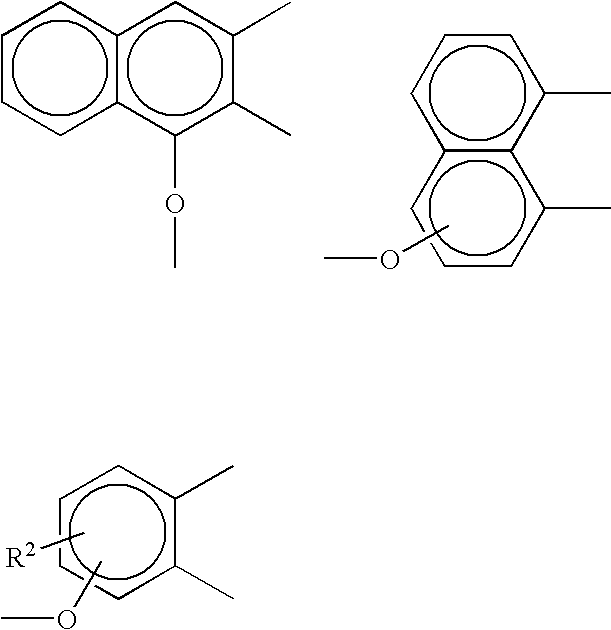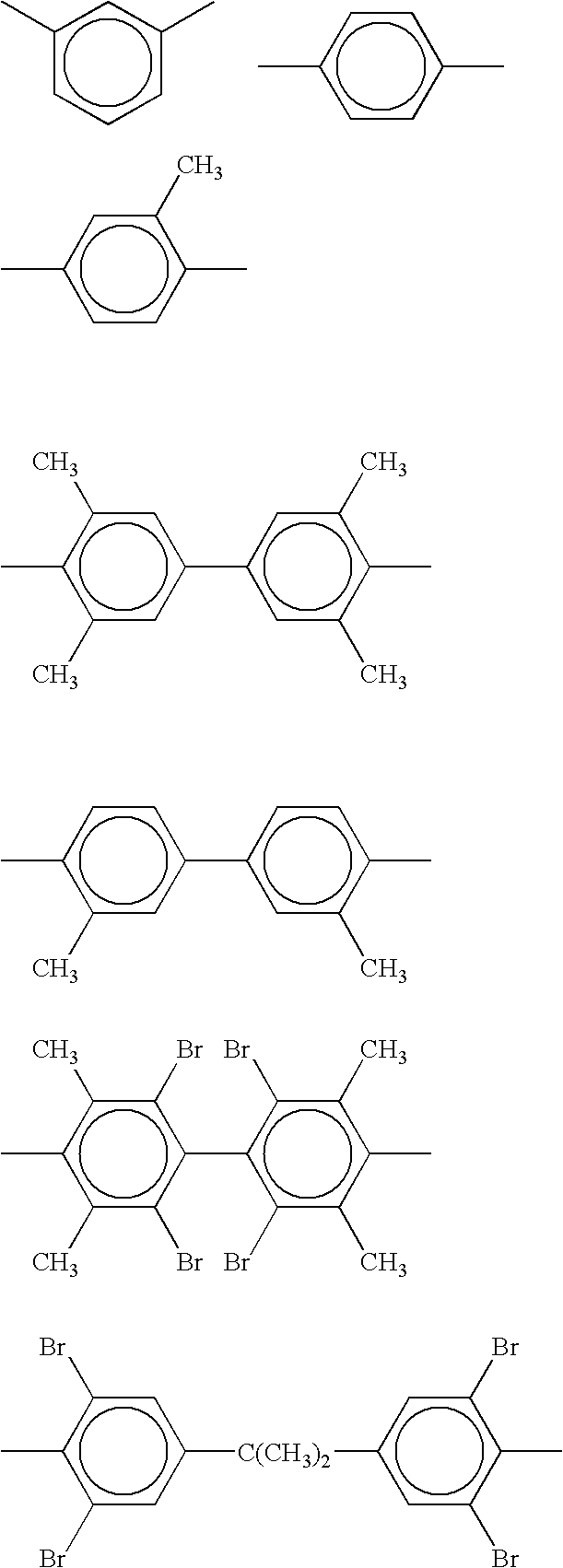Polycarbonate-ultem block copolymers
a technology of polyetherimides and copolymers, applied in the field of polycarbonateultem block copolymers, can solve the problems of excessive number of steps, inability to easily blend materials with aromatic polycarbonate, and inability to successfully use polyetherimides as blocks in copolymers
- Summary
- Abstract
- Description
- Claims
- Application Information
AI Technical Summary
Benefits of technology
Problems solved by technology
Method used
Image
Examples
examples
[0120]Having described the invention in detail, the following examples are provided. The examples should not be considered as limiting the scope of the invention, but merely as illustrative and representative thereof.
[0121]In the examples several terms will be referred to and have the following meaning:[0122]MABPA: Mono amino BPA (e.g. 4-NH2, 4′-OH, a.k.a. Isopropylidene diphenol);[0123]BPADA: 2,2-bis[4-2,3-dicarboxyphenoxy pheynyl]propane dianhydrid;[0124]MPD: Metaphenylene diamine;[0125]O-DCB: o-dichloro-benzene;[0126]HQ: Hydroquinone;[0127]BP: 4,4′Biphenol;[0128]PEI: Polyetherimide;[0129]BPAPC: Bisphenol A polycarbonate;[0130]4-AP: 4-Amino phenol;[0131]3-AP: 3-Amino phenol;[0132]BMSC: Bismethylsalicylate; and[0133]BPA: Bisphenol A.
[0134]Molecular weights were measured by GPC relative to polystyrene standards.
examples 1 – 6
Examples 1–6
[0135]Examples 1–6 demonstrate that block copolycarbonate may be prepared by the process of forming a hydroxy terminated polyetherimide oligomer (Step (1)), isolating it and then copolymerizing it with a dihydroxy compound different than that of the hydroxy terminated polyetherimide oligomer in the presence of an activated diaryl carbonate (Step (II)).
I. Preparation of the Hydroxy Terminated Polyetherimide Oligomer:
[0136](A):
[0137]
TABLE 1Reagents I(A)BPADA:106.284g (0.2042 mole)MPD20.330g (0.188 mole)MABPA3.7051g (0.0163 mole)o-DCB140ml
[0138]A mixture of BPADA in o-DCB was placed in a 500 ml 3-necked round bottom flask equipped with a mechanical stirrer, and a Dean-Stark trap / condenser with a nitrogen bypass. The mixture was immersed in an oil bath preheated to 165° C. After a clear yellow solution was obtained, melted MPD was added drop wise to the solution and the water formed in the process was co-distilled with o-DCB and collected in the Dean-Stark trap. At the end o...
example 1
70% Polyetherimide—30% BPAPC Copolymer
[0146]A mixture of 19.2637 (g) of BPA, 50 (g) of hydroxy terminated PEI oligomer from I(A), and 29.3368 (g) of BMSC were placed in a 500 ml 3 necked round bottom flask equipped with a mechanical stirrer, a distillation adapter and a temperature probe. To the mixture were added 90 ul of 1×10−3 M aqueous solution of NaOH and 18 ul of 1.26 M aqueous solution of TBPA (Tetra butyl phosphonium acetate). The mixture was heated in an oil bath @ 200° C. A thick suspension paste was obtained at the beginning and as the reaction proceed, the mixture become a viscous, clear yellow fluid. After about 4 hours, the homogeneous, viscous mixture was poured out as much as possible into an aluminum foil lined tray. The rest of the material in the flask was removed by solidification with liquid nitrogen. A total of 93.6 (g) of isolated PEI-BPAPC oligomer was recovered.
[0147]45.35 (g) of the above oligomer was placed in a cylindrical reaction tube. The tube was con...
PUM
| Property | Measurement | Unit |
|---|---|---|
| weight ratio | aaaaa | aaaaa |
| weight ratio | aaaaa | aaaaa |
| weight ratio | aaaaa | aaaaa |
Abstract
Description
Claims
Application Information
 Login to View More
Login to View More - R&D
- Intellectual Property
- Life Sciences
- Materials
- Tech Scout
- Unparalleled Data Quality
- Higher Quality Content
- 60% Fewer Hallucinations
Browse by: Latest US Patents, China's latest patents, Technical Efficacy Thesaurus, Application Domain, Technology Topic, Popular Technical Reports.
© 2025 PatSnap. All rights reserved.Legal|Privacy policy|Modern Slavery Act Transparency Statement|Sitemap|About US| Contact US: help@patsnap.com



